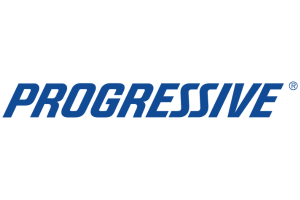Will health insurance cover Coronary angiogram?
Are you wondering if your health insurance will cover the cost of a Coronary angiogram? This article provides insights and information on whether or not your insurance plan will include coverage for this important diagnostic procedure. Find out what to expect and how to navigate the complexities of health insurance when it comes to Coronary angiograms.
Read more Secured with SHA-256 Encryption






Find the Lowest Car Insurance Rates Today
Quote’s drivers have found rates as low as $42/month in the last few days!




Table of Contents
Table of Contents


Insurance Content Managing Editor
Daniel S. Young began his professional career as chief editor of The Chanticleer, a Jacksonville State University newspaper. He also contributed to The Anniston Star, a local newspaper in Alabama. Daniel holds a BA in Communication and is pursuing an MA in Journalism & Media Studies at the University of Alabama. With a strong desire to help others protect their investments, Daniel has writt...
Daniel S. Young


Licensed Insurance Producer
Dani Best has been a licensed insurance producer for nearly 10 years. Dani began her insurance career in a sales role with State Farm in 2014. During her time in sales, she graduated with her Bachelors in Psychology from Capella University and is currently earning her Masters in Marriage and Family Therapy. Since 2014, Dani has held and maintains licenses in Life, Disability, Property, and Casualt...
Dani Best
Updated January 2025
Health insurance is an essential aspect of healthcare that helps individuals manage the costs of medical procedures, including diagnostic tests like a coronary angiogram. Understanding the coverage provided by your health insurance policy is crucial to ensure that you are prepared both medically and financially. In this article, we will explore the different aspects of health insurance coverage for a coronary angiogram, including its purpose, the basics of health insurance, factors affecting coverage, typical costs, and tips for navigating insurance claims. Let’s delve into the details.
Understanding Coronary Angiogram
What is a Coronary Angiogram?
A coronary angiogram is a diagnostic test performed to evaluate the blood flow in the heart arteries. It involves the injection of a contrast dye into the arteries, which helps visualize any blockages or abnormalities. By providing detailed information about the condition of the heart, a coronary angiogram plays a critical role in diagnosing and determining appropriate treatment options for various heart conditions.
During a coronary angiogram, a thin, flexible tube called a catheter is inserted into a blood vessel in the groin or wrist. The catheter is carefully guided to the heart, and the contrast dye is injected through it. As the dye flows through the arteries, X-ray images are taken, allowing doctors to assess the blood flow and identify any narrowings or blockages.
This procedure is typically performed in a specialized cardiac catheterization laboratory, under local anesthesia. It is considered a safe and effective way to evaluate the health of the heart and diagnose potential heart problems.
Why is a Coronary Angiogram Necessary?
A coronary angiogram is often necessary when a patient exhibits symptoms of heart disease, such as chest pain or shortness of breath. It allows doctors to identify the presence and severity of blockages, assess the need for interventions like stenting or bypass surgery, and monitor the progress of treatment. Understanding the necessity of a coronary angiogram helps us recognize its importance in healthcare.
When a patient experiences symptoms of heart disease, it is crucial to determine the underlying cause. A coronary angiogram provides a visual map of the heart arteries, enabling doctors to identify areas of reduced blood flow or complete blockages. This information is vital in determining the most appropriate treatment plan for the patient.
Furthermore, a coronary angiogram helps doctors assess the need for interventions such as stenting or bypass surgery. If a blockage is identified, doctors can determine whether it can be effectively treated with medication or if a more invasive procedure is necessary. This evaluation helps ensure that patients receive the most appropriate and effective treatment for their specific condition.
Moreover, a coronary angiogram is not only useful for diagnosis but also for monitoring the progress of treatment. By performing follow-up angiograms, doctors can assess the effectiveness of interventions and make adjustments to the treatment plan if needed. This ongoing evaluation helps optimize patient outcomes and ensures that the chosen treatment approach is delivering the desired results.
In conclusion, a coronary angiogram is a valuable diagnostic tool that provides detailed information about the blood flow in the heart arteries. It is necessary to accurately diagnose heart conditions, assess the need for interventions, and monitor the progress of treatment. By understanding the importance of a coronary angiogram, patients can make informed decisions about their healthcare and work towards achieving optimal heart health.
Free Health Insurance Comparison
Compare Quotes From Top Companies and Save
Secured with SHA-256 Encryption
Health Insurance Basics
Health insurance is a vital component of maintaining your overall well-being. It operates as a system where individuals pay regular premiums to an insurance company, ensuring financial protection in the event of medical emergencies or routine healthcare needs.
How Does Health Insurance Work?
When you have health insurance, you enter into a contractual agreement with an insurance company. In return for your regular premium payments, the insurance company agrees to help cover the costs of medical services. These services can range from routine doctor visits to more complex procedures, such as surgeries or tests like a coronary angiogram.
It’s important to note that the specifics of coverage depend on the policy you choose and the provisions it includes. Policies often have different deductibles, copayments, and limits on certain services or treatments. These factors can greatly impact the out-of-pocket costs you may incur when seeking medical care.
For example, a policy with a high deductible may require you to pay a significant amount upfront before the insurance company begins to cover costs. On the other hand, a policy with a lower deductible may have higher monthly premiums but lower out-of-pocket expenses when you need medical attention.
Types of Health Insurance Coverage
There are various types of health insurance coverage available to individuals, ensuring that there is an option suitable for everyone’s unique needs.
One common type of coverage is employer-sponsored plans, which are offered by many companies to their employees. These plans are typically negotiated by the employer and provide a range of benefits to their workforce. The premiums for these plans are often deducted from employees’ paychecks, making it a convenient and accessible option.
Government-funded plans, such as Medicare and Medicaid, are another type of health insurance coverage. Medicare is primarily for individuals aged 65 and older or those with specific disabilities, while Medicaid is designed to assist low-income individuals and families. These programs aim to ensure that everyone has access to essential healthcare services, regardless of their financial situation.
Lastly, individual plans can be purchased directly from insurance providers. These plans offer flexibility and allow individuals to choose the coverage that best suits their needs. While they may require more research and comparison, individual plans can provide a personalized approach to health insurance.
It’s important to review your policy and understand the extent of coverage it offers. Familiarize yourself with the network of healthcare providers that are covered under your plan, as well as any limitations or exclusions that may apply. By being well-informed, you can make the most of your health insurance coverage and ensure that you receive the necessary care when you need it.
Health Insurance and Coronary Angiogram
Factors Affecting Insurance Coverage for Coronary Angiogram
When it comes to health insurance coverage for a coronary angiogram, several factors may influence the extent of coverage you receive. These factors include the type of insurance plan you have, whether the test is deemed medically necessary by your healthcare provider, and whether the provider performing the angiogram is in-network with your insurance company. Understanding these factors can help you navigate the coverage process more effectively.
Typical Costs of Coronary Angiogram with and without Insurance
The cost of a coronary angiogram can vary depending on various factors, such as the geographical location, the hospital or facility where the procedure is performed, and the complexity of the case. Generally, the cost of a coronary angiogram can range from a few thousand dollars to several thousand dollars. However, with health insurance coverage, your out-of-pocket expenses may be significantly reduced. It’s important to check with your insurance company to understand the specific costs and coverage associated with your policy.
Navigating Insurance Claims for Coronary Angiogram
How to File an Insurance Claim for a Coronary Angiogram
Filing an insurance claim for a coronary angiogram typically requires providing the necessary documentation to your insurance company. This documentation may include the doctor’s order for the test, the itemized bill from the hospital or facility, and any additional information required by your insurance company. It’s important to follow the specific guidelines provided by your insurance company and keep copies of all relevant documents for reference.
Dealing with Insurance Claim Denials
In some cases, insurance claims for a coronary angiogram may be denied. This can happen due to various reasons, such as lack of medical necessity, out-of-network providers, or incomplete documentation. If your claim is denied, it’s important to review your policy, understand the reason for denial, and consider appealing the decision. Working closely with your healthcare provider and insurance company can help you navigate the appeals process and potentially secure the coverage you deserve.
Free Health Insurance Comparison
Compare Quotes From Top Companies and Save
Secured with SHA-256 Encryption
Tips for Ensuring Your Coronary Angiogram is Covered
Understanding Your Health Insurance Policy
To increase the chances of having your coronary angiogram covered by health insurance, take the time to thoroughly review and understand your policy. Familiarize yourself with the provisions, coverage limits, and any specific requirements for pre-authorization or referrals. Being well-informed about your policy can help you make informed decisions and avoid any unexpected financial burdens.
Communicating with Your Healthcare Provider and Insurance Company
Open and transparent communication between you, your healthcare provider, and your insurance company is crucial to ensure appropriate coverage for a coronary angiogram. Discuss the necessity of the test with your healthcare provider and involve them in the pre-authorization process if required. Additionally, reach out to your insurance company to clarify any doubts or questions regarding coverage. Effective communication can help clear any potential hurdles in securing insurance coverage.
In conclusion, health insurance coverage for a coronary angiogram depends on various factors, including the policy you have, its provisions, and the medical necessity of the test. By understanding the basics of health insurance, navigating the claims process, and effectively communicating with your healthcare provider and insurance company, you can increase the likelihood of receiving appropriate coverage. Remember to review your policy, consult with healthcare professionals, and keep yourself informed to make informed decisions about your health and financial well-being.
Frequently Asked Questions
Will health insurance cover a Coronary angiogram?
Health insurance may cover the cost of a Coronary angiogram, but it depends on your specific insurance plan. It is recommended to review your policy or contact your insurance provider to understand the coverage details.
What is a Coronary angiogram?
A Coronary angiogram is a medical procedure used to diagnose heart conditions. It involves injecting a contrast dye into the coronary arteries and taking X-ray images to visualize the blood flow and identify any blockages or abnormalities.
Why would someone need a Coronary angiogram?
A Coronary angiogram is typically performed if a person is experiencing symptoms of heart disease, such as chest pain, shortness of breath, or irregular heartbeat. It helps doctors evaluate the condition of the coronary arteries and determine the need for further treatment, such as angioplasty or bypass surgery.
How is a Coronary angiogram performed?
During a Coronary angiogram, a thin tube called a catheter is inserted into a blood vessel, usually in the groin or wrist. The catheter is then guided to the coronary arteries, and the contrast dye is injected. X-ray images are taken as the dye flows through the arteries, providing detailed information about their condition.
Are there any risks or side effects associated with a Coronary angiogram?
While a Coronary angiogram is generally considered safe, there are some risks involved. These may include bleeding or bruising at the catheter insertion site, allergic reactions to the contrast dye, blood clots, or damage to the blood vessels. It is important to discuss these risks with your healthcare provider before the procedure.
Is a Coronary angiogram a painful procedure?
During a Coronary angiogram, local anesthesia is used to numb the area where the catheter is inserted, so you should not feel pain at the insertion site. However, you may experience some discomfort or a warm sensation when the contrast dye is injected. If you feel any pain or discomfort during the procedure, inform the medical team immediately.
Get a FREE Quote in Minutes
Insurance rates change constantly — we help you stay ahead by making it easy to compare top options and save.



